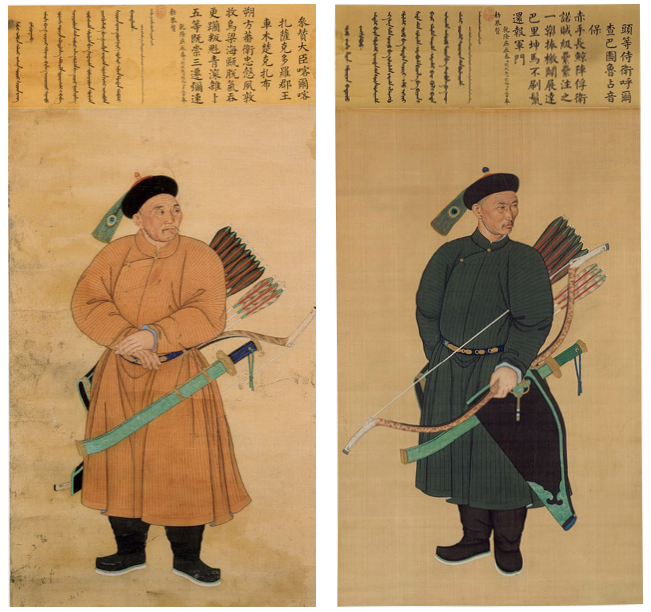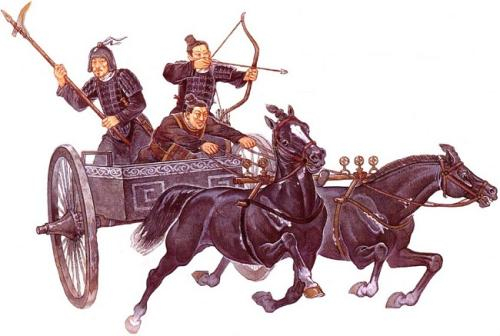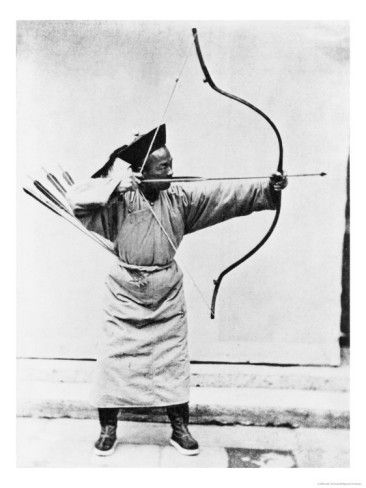Traditional Chinese Archery
Origins of Traditional Chinese Archery
The practice of traditional Chinese archery has seen a revival in recent years, and it’s origins within China go back to the earliest of recorded history. Archery has long been a part of Chinese culture and society. During the longest reigning dynasty in China (Zhou Dynasty (1122–256 BCE), students were required to master the “liù yì” (六藝) (Six Arts) which includes archery:
- Rites (禮)
- Music (樂)
- Archery (射)
- Charioteering (御)
- Calligraphy (書)
- Mathematics (數)

Confucius (551–479 BC) who lived during the time of the Zhou Dynasty was well studied in the Six Arts and was himself an archery teacher.
The practice of traditional Chinese archery is referred to as “The Way of Archery” after 17th Century Ming Dynasty archery manuals written by Gao Ying.
Warfare
Defending her borders from marauding nomads, the Chinese adopted the composite reflex bow and mounted archery into their military tactics. Much like the ancient Assyrians and Egyptians, firing the bow from chariots was the first major use of the composite reflex bow. Eventually, with the reforms of King Wuling of Zhao in 307 BCE, the ancient Chinese adopted the mounted archery tactics of the bordering Xiongnu tribes.

The crossbow was the preferred archery method for foot soldiers from the earliest of times. Despite this, foot archery still served an important role, especially in training. Military exams in the later dynasties included archery. Specially designed bows with extra heavy draw weights (approaching 200 pounds at full draw) were used to test the strength of the participant.
Shooting Techniques
Many archery schools and manuals coexisted in China throughout history all emphasizing concentration and focus. Like most eastern archery techniques for drawing a bow, traditional Chinese archery uses a thumb draw. Utilizing a thumb draw typically requires a thumb ring to protect the digit from repeated stress. Thumb rings from ancient China came in a variety of shapes and materials including horn, Jade, various metals and leather thumb tabs.

If you would like to learn more about practicing traditional Chinese archery, it is highly recommended you check out http://www.thewayofarchery.com/tutorials.html for some fantastic videos and other resources.
Traditional Chinese Bows
Traditional Chinese archery incorporates a variety of bows. Archeological and written records indicate the use of mainly wood/horn/sinew composite bows were the primary bows used, but wood composites and selfbows were also used. Some of the bow types used in ancient China include:
- Scythian Horn Bows. Scythian style bows have been found in burials in China some dating to around 600 BCE. It is surprising to find these style bows so far east as the bow was more well known to the Greeks and other areas of Western Europe. Nevertheless, the shape of the Scythian bow is unmistakable and these bow discoveries in China are a testament to the geographical widespread use of this style of bow.
- Longbows (selfbows). Longbows and bows constructed from composites of wood were known and used more extensively in more humid and warmer areas of Southern China. Humidity is not good for horn bows and the humidity could affect the adhesives that held the layers of material together.
- Long-siyah Horn Bows. Many later model traditional Chinese bows have relatively large siyahs (the siyah is the non-bending end section of an Asiatic recurve). Later Chinese bows also feature prominent string bridges.
- Qing Dynasty Bow (Manchurian Bow) – The Manchu bow is a large long-siyah horn bow with prominent string bridges. The emphasis of placed on shooting very long and heavy arrows with maximum penetrative effect. Modern Mongolian bows such as those used in the Nadaam festival are heavily influenced by the Qing bow.

Resources & Links
http://www.thewayofarchery.com – an excellent resource for those interested in getting involved in traditional Chinese archery. Techniques rely primarily on the 17th Century Ming Dynasty archery manuals written by Gao Ying.
https://www.cinnabarbow.com – Traditional Chinese archery equipment